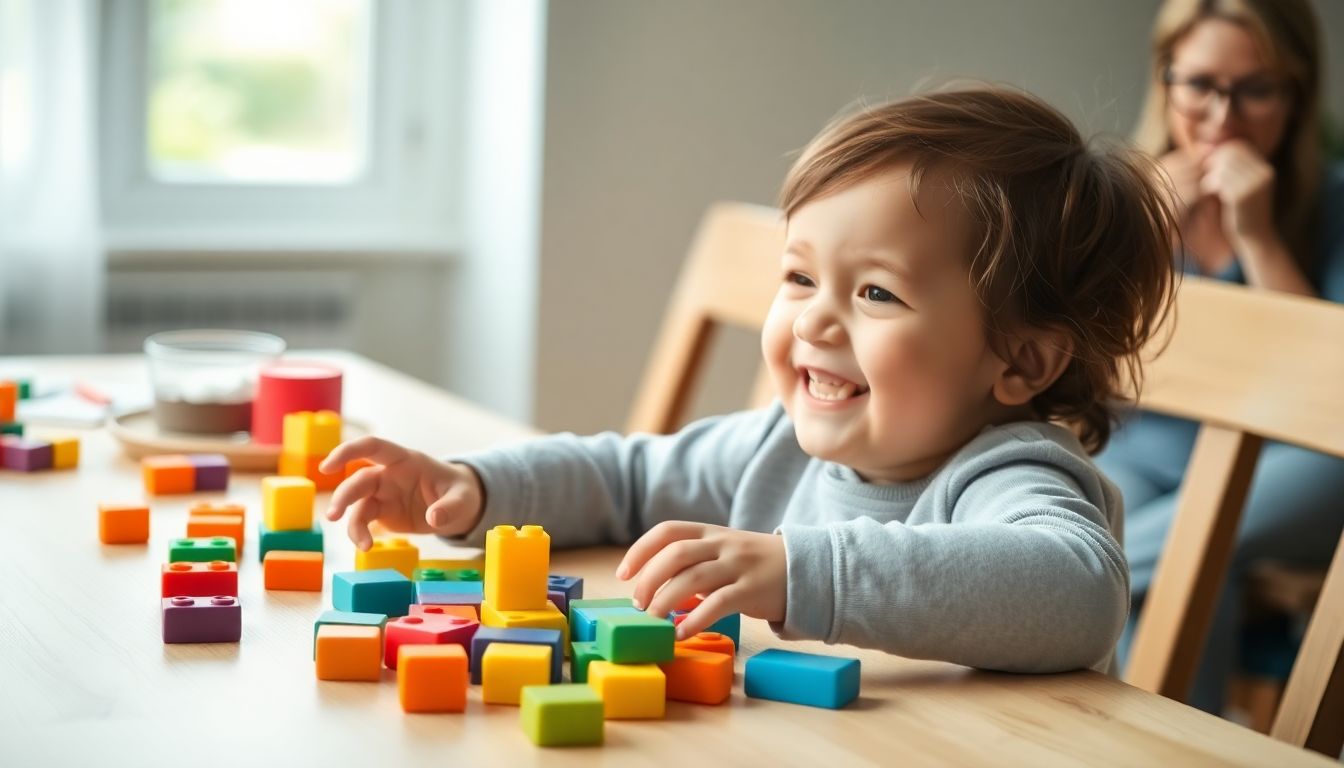
A toddler sits at the dining table, completely absorbed in arranging colorful cube foam blocks. Each block seems to capture their imagination as they stack, sort, and create vibrant towers and patterns. Surrounding this delightful scene, a mother enjoys her lunch, relishing a moment of peace while watching her child play. This minute illustrates the magic of play-based learning and the joy it brings to both toddler and parent.
Play is vital for young children. It fosters creativity, builds essential skills, and nurtures connections between parents and kids. Shared mealtimes, like the one depicted, become enriching experiences, enhancing both independent play and family bonding.
The Developmental Benefits of Block Play
Cognitive Development
Block play offers significant cognitive advantages. Research indicates that manipulating blocks aids in problem-solving and spatial reasoning, helping children understand their environment better. Studies show that engaging children in learning activities like block play during toddler years can boost creativity by as much as 30%. This foundation supports future learning and problem-solving abilities.
Fine Motor Skills
Playing with foam blocks enhances fine motor skills. When toddlers grasp and stack blocks, they strengthen hand-eye coordination and dexterity. Specific skills developed through block play include:
- Grasping: Holding blocks tightly improves grip.
- Stacking: Placing blocks on top of each other refines balance.
- Sorting: Grouping blocks by color or shape develops categorization skills.
Social-Emotional Growth
Independent play with blocks nurtures self-reliance and confidence in toddlers. As they create their own structures, they learn to celebrate their accomplishments. Parents can support this growth by:
- Encouraging exploration: Provide freedom to experiment with various patterns.
- Acknowledging efforts: Celebrate achievements to boost confidence.
- Offering gentle guidance: Step in only when necessary, allowing the child to lead.
Choosing the Right Blocks for Your Toddler
Safety First
Select non-toxic, age-appropriate blocks to ensure safety during play.
This independent learning activities might help 1 https://bit.ly/4b6B5UQ
Size and Shape Variety
Blocks come in various sizes and shapes. Offering diverse options stimulates creativity and exploration. Educational resources suggest that a mix of block shapes fosters problem-solving and imaginative scenarios, ideal for engaging little minds.
Durability and Cleanability
Opt for durable blocks that can withstand rough play. Choose materials that are easy to clean, making playtime less daunting for parents. Foam blocks are great for toddlers as they often feature lightweight and washable designs.
Our latest content
Check out what's new in our company !
Learning Objectives
- Promote fine motor skills
- Enhance cognitive development
- Foster creativity in toddlers
- Build social skills through play
- Develop language skills
Conclusion
The benefits of block play for toddlers are clear. It enhances cognitive and motor skills while promoting emotional growth. Parents also gain from these moments, finding peace and connection during mealtimes. By creating a supportive play environment, parents can encourage learning and creativity in their children. Try incorporating these strategies and watch the joy unfold during playtime!
If you like our article do comment and share to encourage us to write more such toddler home learning activities and tag us on instagram @boredombustersbusybags
Toddler Playtime: The Joy of Blocks at the Dining Table